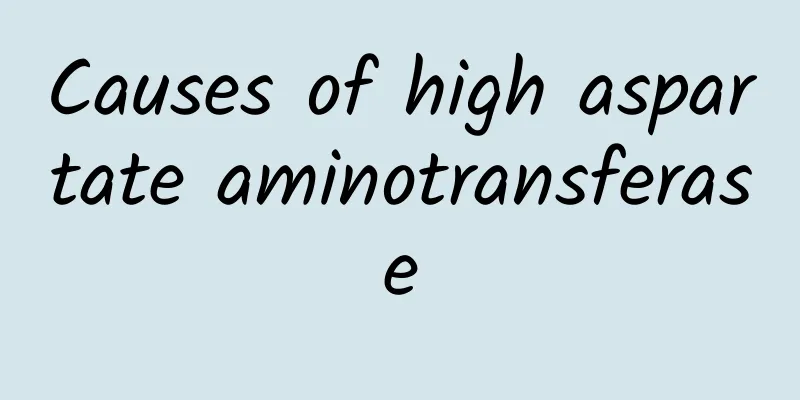Subclavian deep vein puncture

|
The clavicle is next to our shoulders on both sides. Some people's clavicle is more obvious, so it is easier to see the deep subclavian vein. This also brings convenience to our examination. Moreover, when the clavicle is not obvious, it is easy to select the vein, which increases the difficulty of the examination. Regarding the method of subclavian deep vein puncture surgery, we should choose a large hospital for examination and understand the method of this surgery. 1. Anatomy The subclavian vein is 3 to 4 cm long, with a diameter of approximately 10 to 20 mm, and can reach 12 to 25 mm at its maximum. Li Fude et al. conducted anatomical measurements of the subclavian vein. The subclavian vein crosses the lower edge of the clavicle. The distance from this intersection to the medial end of the clavicle is (5.69 ± 4.22) cm on the left and (5.53 ± 4.10) cm on the right; the caliber is (1.30 ± 0.77) cm on the left and (1.24 ± 0.18) cm on the right; the depth of the subclavian vein: on the left side of the intersection, the average is 2.14 cm, and on the right side, the average is 2.23 cm; at the venous angle, the average is 2.10 cm on the left and 2.22 cm on the right; it runs almost parallel to the inner 1/3 of the clavicle. Because the subclavian vein is surrounded by connective tissue, it is very obvious even in patients with hypovolemia. Moreover, the course and position of the subclavian vein are relatively constant. It starts from the lateral edge of the first rib, and when it runs behind the medial part of the clavicle, it is located between the clavicle, the first rib and the anterior scalene muscle, and is separated from the subclavian artery by this muscle. It merges with the internal jugular vein behind the sternoclavicular joint to form the innominate vein. 2. Puncture site: left or right The left or right subclavian vein can be used, but most experts prefer the right side. The anatomical differences between the left and right sides - the curvature of the subclavian vein and the height of the pleural apex determine whether "clavicular puncture" is better on the right side. First, Fang Ji et al. reported that the angle between the right inferior clavicle and the subclavian vein in adults was (37.5 ± 11.6) degrees; Tan Xiaojun et al. reported that the angle between the left inferior clavicle and the subclavian vein in adults was (39.0 ± 4.5) degrees, indicating that the curvature of the vein in the clavicle segment is greater on the left side than on the right side, so the success rate is higher when puncturing on the right side. Secondly, the left parietal pleura is slightly higher than the right side, so the risk of pneumothorax in right-side puncture is relatively reduced. Finally, the angle between the left internal jugular vein and the subclavian vein is the entrance for the thoracic duct to enter the superior vena cava. If you are not careful, a "chylothorax" will occur, which will not be worth the loss. Of course, Liu Yang et al. pointed out in the article "Good Method for Left Subclavian Vein Puncture" that "the upper limb on the puncture side is abducted 45 degrees and extended 30 degrees, and the left humeral coracoid process is taken 4 to 5 degrees inward. The modified subclavian vein puncture method of "2-3 cm below the clavicle as the needle insertion point" can overcome the disadvantage of large anatomical curvature on the left side, improve the success rate of puncture and reduce the incidence of complications. However, it is still emphasized that the right side is preferred for puncture. If the right side cannot be punctured due to infection at the puncture site, the left side is selected. Then the modified puncture method is different from the traditional Seldinger method. Compared with subclavian puncture, it has certain advantages. 3. Puncture route: upper or lower choice Subclavian approach: It was the earliest used in clinical practice. The patient's upper limbs are hung at the sides of the body and slightly abducted, and the clavicle is kept slightly forward to open the intercostal space to facilitate needle insertion. The needle insertion point is at the junction of the middle and outer 1/3 of the clavicle, about 1 cm below the clavicle. The needle tip moves inward and slightly toward the posterior superior edge of the sternal end of the clavicle. If the vein cannot be punctured, the needle can be withdrawn subcutaneously and inserted with the needle tip pointing toward the thyroid cartilage. During the puncture process, try to keep the puncture needle horizontal to the chest wall and close to the posterior edge of the clavicle. Since the parietal pleura can extend upward beyond the first rib by about 2.5 cm, if the needle is inserted too deeply, passes the first rib, or penetrates the anterior and posterior walls of the vein and punctures the pleura and lung, pneumothorax may occur. This is the main reason why this approach is rarely used at present. Supraclavicular approach: The patient's shoulders are raised, the head is turned to the opposite side as much as possible and the supraclavicular fossa is exposed. The needle insertion point is at the lateral edge of the clavicular head of the sternocleidomastoid muscle, about 1 cm above the clavicle. The needle shaft is at a 45° angle to the clavicle or sagittal plane (midline). In the coronal plane, the needle shaft remains horizontal or slightly tilted forward by 15° to point toward the sternoclavicular joint. Usually, the needle can enter the vein after being inserted 1.5 to 2.0 cm. When dark red venous blood is seen, fix the needle body, insert the guide wire, withdraw the puncture needle, insert the skin expander along the guide wire to expand the skin and subcutaneous tissue, withdraw the skin expander, and then insert the central venous catheter along the guide wire. The catheter is left in place at a depth of 12 to 15 cm. Remove the guide wire, draw back the venous blood with a syringe, confirm that the catheter is in the vein again, connect the liquid to determine whether it is unobstructed, and fix the central venous catheter with transparent auxiliary materials. During the needle insertion process, the needle tip actually leaves the subclavian artery and pleura and moves in the deep fascia of the clavicular head of the sternocleidomastoid muscle, so safety can be guaranteed. Improved left subclavian vein puncture method: the upper limb on the puncture side is abducted 45 degrees and extended 30 degrees, and the left humeral coracoid process is taken 4 to 5 cm inward. The needle insertion point is 2 to 3 cm below the inferior edge of the clavicle, and the direction of the needle is directed to the middle and outer 1/3 intersection of the line connecting the tracheal cricoid cartilage and the supraclavicular concavity. The needle is adjusted according to the patient's different levels of fatness and thinness, so that the needle direction is 10 to 25 degrees to the coronal plane of the body and 15 to 30 degrees to the horizontal plane. The needle is inserted to a depth that just passes the inferior edge of the clavicle, and then the negative pressure of the syringe is maintained and the needle is slowly withdrawn. After the blood is seen, it is determined whether the needle has entered the subclavian vein. The improved method determines the direction of needle insertion based on three indicators: the direction of the puncture needle, the angle with the coronal plane, and the angle with the horizontal plane. It also takes into account the influence of individual differences, making the angle more accurate and precise. 4. Length of catheter indwelling in subclavian vein puncture The catheter insertion depth is 13-15 cm on the right side and 15-17 cm on the left side. 5. What are the advantages and disadvantages of “lock puncture” compared with other routes of central venous puncture? Advantages: (1) The subclavian vein has a longer retention time than other alternative sites (internal jugular vein and femoral vein); (2) The catheter-related infection rate of the subclavian vein is lower than that of other alternative sites (internal jugular vein and femoral vein); (3) Subclavian vein puncture is less likely to cause catheter displacement and thrombosis than femoral vein puncture; (4) The subclavian vein is fixed in position and not prone to collapse. Disadvantages: (1) Subclavian vein puncture is technically difficult, and complications during puncture (such as hemothorax, etc.) are high in incidence and serious, and may even endanger the patient's life; (2) The risk of mechanical complications associated with subclavian vein puncture (accidental artery injury, minor bleeding, hematoma, catheter malposition) is higher than that of internal jugular vein and femoral vein; ( 3) When an artery is accidentally injured during subclavian vein puncture and bleeding occurs, it is difficult to apply pressure to stop the bleeding. 6. Common complications and causes of subclavian vein puncture (1) Pneumothorax and hemothorax Pneumothorax and hemothorax are common complications during subclavian vein puncture and catheterization that are very likely to lead to serious consequences. The lower posterior wall of the subclavian vein is only 5 mm away from the pleura. If the puncture needle exceeds the correct range, it is very easy to damage the pleura. The presence of gas when the syringe is withdrawn during puncture is the earliest evidence of damage to the pleura and lungs, but there is also the possibility of accidental tracheal puncture. In addition, when analyzing the phenomenon of gas being seen when the syringe is withdrawn, it is necessary to rule out leakage in the connection between the syringe and the puncture needle, and whether the traumatized patient already has hemothorax or pneumothorax. (2) Accidental artery puncture Because the subclavian vein and artery are close to each other and have a long accompanying pathway, there is a greater chance of accidentally puncturing the artery, especially when the local vascular anatomy of the puncture site is unfamiliar. The risk is greater when the patient has high blood pressure, abnormal coagulation function, or an aneurysm is present at the puncture site, especially when placing a 12Fr dialysis catheter in a patient with renal failure. Due to the large diameter of the catheter, if the artery is accidentally injured, a fatal huge hematoma may form and compress the trachea, causing severe breathing difficulties and suffocation. (3) Local bleeding and hematoma at the puncture site Clinically, it should be noted that patients with coagulation dysfunction are more likely to develop such complications. During the operation, attention should be paid to gentle movements, and repeated attempts in multiple directions with a thick puncture needle should be avoided. After the operation, the puncture site should be closely observed for bleeding, redness, swelling, and so on. Early detection and early treatment are required. Usually, compression can be used to stop bleeding. If bleeding persists, the reason may be that the venous pressure is too high. A stitch can be sewed on the puncture point with a ring catheter. Try to press as hard as possible to prevent skin necrosis. (4) Arrhythmia Arrhythmia and angina pectoris are mainly caused by adverse stimulation of wires and catheters. Over-deep insertion of stylets and catheters should be avoided, and the depth of needle insertion should take into account the individual's height and body shape. Generally, it is the distance from the puncture point to the sternoclavicular joint, plus the length of the brachiocephalic vein and superior vena cava. It is most appropriate for the tip of the subclavian venous catheter to be located in the upper part of the superior vena cava, which is above the pericardial reflection line. Even if perforation of the venous wall occurs, there is no risk of pericardial tamponade. |
<<: How long does it take for the cord blood puncture to produce results?
>>: Acupuncture points for tonifying the spleen
Recommend
How to treat fallopian tube obstruction? What should I pay attention to?
Fallopian tube obstruction is one of the most tro...
Why does the head sweat easily?
Anyone who has carefully observed the sweating of...
The efficacy and function of licorice root
Licorice is a herb with certain medicinal value. ...
Is moxibustion effective?
Moxibustion is a commonly used treatment method i...
How to treat severe physical deficiency
When physical weakness is severe, you must pay at...
What is a pimple in the groin?
Pimples are not uncommon. Everyone has a few pimp...
Can ginger make eyebrows thicker?
Many people have come into contact with ginger in...
How to improve sagging skin
Skin problems have always been a serious concern ...
Can I go to kindergarten if I have a cold?
Children's immune system is relatively weaker...
What to eat to clear lung heat? What can you eat to clear away heat?
In life, we always feel that fried foods and heav...
What is gallstone?
Gallstone is also called blue alum or stone galls...
What are the clinical manifestations of spinal shock?
Spinal shock is actually not difficult to underst...
Ankylosing spondylitis
Patients suffering from this disease must have a ...
What are the best ways to detoxify your liver and gallbladder?
The liver and gallbladder need to pay attention t...
What are the methods for oil control and acne treatment?
As we all know, since entering puberty, many pimp...









